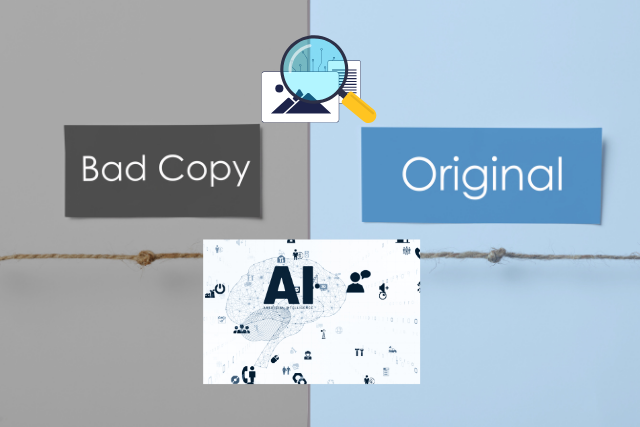AI inference uses a trained artificial intelligence (AI) model to make predictions, classify, or generate new data based on the patterns and relationships learned from a training dataset.
In other words, AI inference is the application of AI models to real-world data to extract insights, make decisions, or automate tasks.
This crucial step in the AI development process allows AI models to be deployed and used in practical applications across various industries, from healthcare to finance to retail.
Types of AI Inference
1. Classification
Classification is a type of AI inference where models are trained to classify new data into predefined categories or classes. This technique is widely used in applications such as:
- Spam Detection: Email systems use AI to classify incoming messages as spam or legitimate.
- Image Recognition: AI models can classify images, such as identifying objects, animals, or faces.
- Sentiment Analysis: AI can classify text data to determine the sentiment, whether positive, negative, or neutral.
2. Regression
Regression involves training AI models to predict continuous values or numerical outputs. Some typical applications include:
- Stock Price Prediction: AI models can forecast future stock prices based on historical data.
- House Value Estimation: Real estate platforms use AI to predict the value of a property based on various factors.
- Weather Forecasting: Meteorological data is analyzed to predict weather conditions.
3. Clustering
Clustering is used to group similar data points into clusters or segments. It is often applied in:
- Customer Segmentation: Retailers use AI to segment customers based on purchasing behaviour.
- Market Research: Companies analyze market trends by clustering similar data points.
- Anomaly Detection: Identifying outliers in data, such as fraudulent transactions or defective products.
4. Generation
Generation refers to AI models creating new data, such as text, images, or audio. This is prevalent in creative fields like:
- Content Generation: AI can write articles, create social media posts, and generate books.
- Image Synthesis: AI models can create realistic images, such as generating faces that do not exist.
- Music Composition: AI can compose original music, providing new melodies and harmonies.
Techniques Used in AI Inference
1. Deep Learning
Deep learning involves training AI models using deep neural networks to learn complex patterns and relationships. This technique is highly effective for:
- Image Recognition: Deep learning models, such as convolutional neural networks (CNNs), excel at recognizing objects in images.
- Natural Language Processing: Recurrent neural networks (RNNs) and transformers are used to understand and generate human language.
- Game Playing: Deep learning models like AlphaGo have achieved superhuman performance in games like Go and Chess.
2. Machine Learning
Machine learning encompasses a variety of algorithms that enable AI models to learn from data and make predictions. Key techniques include:
- Decision Trees: Used for classification and regression tasks, decision trees split data into branches to make decisions.
- Support Vector Machines: Effective for classification tasks, these models find the optimal boundary between different classes.
- K-Nearest Neighbors: A simple yet powerful algorithm that classifies data points based on their proximity to other data points.
3. Natural Language Processing (NLP)
NLP focuses on processing and analyzing human language to extract insights and generate text. Applications of NLP include:
- Chatbots: AI-powered chatbots provide customer service by understanding and responding to user queries.
- Language Translation: AI models translate text from one language to another, enhancing communication.
- Sentiment Analysis: NLP models analyze text to determine the sentiment expressed by the author.
4. Computer Vision
Computer vision involves training AI models to analyze and understand visual data, such as images and videos. This technology is used in:
- Facial Recognition: AI models identify and verify individuals based on facial features.
- Object Detection: Models detect and locate objects within images or videos.
- Autonomous Vehicles: AI analyzes sensor data to navigate and make decisions in real time.
Applications of AI Inference Across Industries
1. Healthcare
AI models in healthcare can revolutionize patient care by:
- Diagnosing Diseases: AI analyzes medical images, such as X-rays and MRIs, to accurately diagnose conditions.
- Predicting Patient Outcomes: Models predict patient outcomes based on historical data, helping plan treatment.
- Personalizing Treatment Plans: AI tailors treatment plans to individual patients, improving the effectiveness of care.
2. Finance
In the finance industry, AI inference enhances decision-making and operational efficiency through:
- Financial Data Analysis: AI models analyze vast amounts of financial data to identify trends and make predictions.
- Stock Price Prediction: Models forecast stock prices, aiding investors in making informed decisions.
- Fraud Detection: AI detects fraudulent transactions by identifying patterns and anomalies in transaction data.
3. Retail
Retailers leverage AI inference to improve customer experience and operational efficiency by:
- Analyzing Customer Behavior: AI models analyze purchasing patterns to understand customer preferences.
- Predicting Purchasing Patterns: Models forecast future buying behaviours, enabling better inventory management.
- Personalizing Marketing Campaigns: AI tailors marketing messages to individual customers, increasing engagement and sales.
4. Autonomous Vehicles
AI inference is critical in developing safe and efficient autonomous vehicles by:
- Analyzing Sensor Data: AI processes data from sensors like cameras and LIDAR to understand the vehicle’s environment.
- Predicting Road Conditions: Models predict road conditions and obstacles, helping the vehicle navigate safely.
- Making Real-Time Decisions: AI makes split-second decisions to ensure the vehicle’s safe and efficient operation.
Benefits of AI Inference
1. Improved Accuracy
AI models learn from large datasets, enabling them to make highly accurate predictions. This leads to reliable outcomes and better decision-making across various applications.
2. Increased Efficiency
AI models automate repetitive and time-consuming tasks, reducing the need for human intervention. This increases productivity and operational efficiency, allowing human workers to focus on higher-level tasks.
3. Enhanced Decision-Making
AI models provide insights and recommendations based on data analysis, supporting informed decision-making. This helps organizations make strategic decisions with confidence.
4. Cost Savings
By automating tasks and improving operational efficiency, AI models can lead to significant cost savings. This is particularly beneficial in manufacturing, logistics, and customer service industries.
Challenges of AI Inference
1. Data Quality
High-quality training data is essential for AI models to learn effectively. Poor data quality can lead to inaccurate predictions and unreliable outcomes, highlighting the importance of data integrity.
2. Model Interpretability
AI models, intense learning models, can be difficult to interpret and understand. This makes it challenging to identify biases, errors, and potential areas for improvement, raising concerns about transparency and trust.
3. Model Deployment
Deploying AI models and integrating them into existing systems can be complex and time-consuming. This requires technical expertise and resources to ensure seamless integration and functionality.
4. Model Maintenance
AI models require ongoing maintenance and updates to remain accurate and effective. This involves monitoring performance, retraining models as needed, and addressing any issues that arise.
Conclusion
AI inference is a powerful tool that enables AI models to make predictions, classify data, and generate new content based on learned patterns. Organizations across various industries can improve accuracy, efficiency, decision-making, and cost savings by leveraging AI inference.
However, it is essential to address challenges such as data quality, model interpretability, deployment, and maintenance to fully realise AI inference’s benefits. As AI technology continues to evolve, its potential to transform industries and drive innovation remains immense.
By understanding and harnessing the capabilities of AI inference, businesses and individuals can stay ahead of the curve, embracing the future of AI-driven innovation and creativity.







